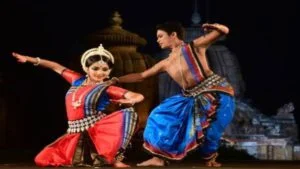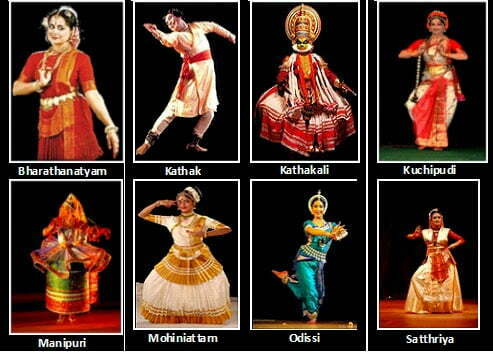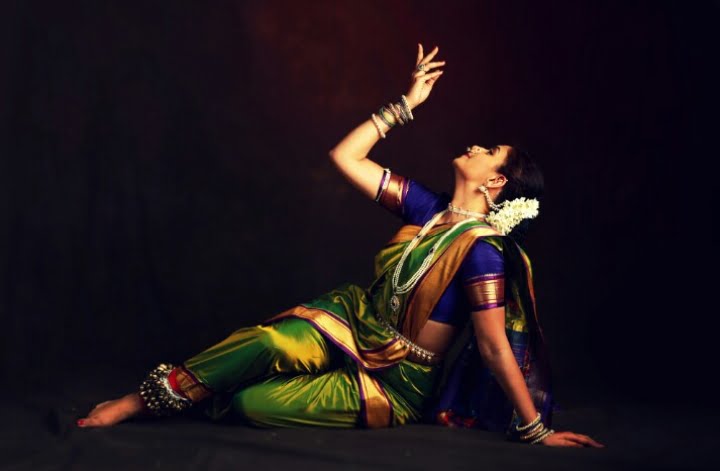Kerala’s unique beauty lies not only in its shimmering water bodies and lush forests but also in its cultural heritage. With its history that dates back to the early tenth century, it is well-known for its unique cultural heritage, which includes art, cuisines, and dance traditions.
Dance has always been an integral part of the culture of any region. Witnessing a dance form in Kerala is eerily similar to viewing its immaculate backwaters from a houseboat.
These dance forms have grown in popularity not only in the state but also around the world! Each dance form is distinct and has its own way of expressing itself, adorned with ornaments and dance costumes.

Therefore, in this article, we, at Podium School, intend to take you on a journey into the world of the oldest existing classical theatre form from Kerala, the Koodiyattam.
What Is Koodiyattam?
Koodiyattam, also known as Kutiyattam in Kerala, is a traditional art form and folk dance. Being the world’s oldest classical theatre form, it evolved much before Kathakali and most other theatrical forms. It is a blend of Sanskrit classicism that reflects Kerala’s local customs.
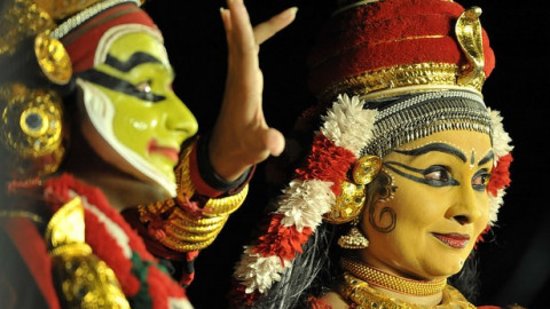
Koodiyattam, which means “combined acting” in Malayalam, combines elements of traditional Koothu with Sanskrit theatre performances. Koothambalams, or temple theatres, are the traditional venues for these performances. The entire performance is a sacrificial offering to god.
Stories for Koodiyattam are extracts from mythological books such as the “Ramayana,” “Bhagavatham,” and “Mahabharatha”. Other important texts include the noted works of Kalidasa, one of the pioneers of ancient Indian literature.
It distinguishes itself from other dance forms by combining folklore, music, poetry, and dexterous dance movements. Moreover, UNESCO recognized it as the Masterpiece of the Oral and Intangible Heritage of Humanity in 2001. This was the first time an art form has been acknowledged for its exceptional value.
Origin
It’s the only surviving art form that employs ancient Sanskrit drama. It has a thousand-year historical history in Kerala, but its roots are unknown. Both Koodiyattam and Chakyar Koothu descended from the ancient art form Koothu, which appears in Sangam literature as well as epigraphs from the Pallava, Pandiyan, Chera, and Chola periods.
Ancient kings are among those listed as authors of works for these services. Kulasekhara Varma Cheraman Perumal, an ancient Kerala king, holds the credit for inventing Koodiyattam in its current form. His work “Aattaprakaram” covers a variety of topics related to Koodiyattam. The theatre in Kulasekhara’s time was unique in that it catered to a secular elite audience within the royal court’s premises. Between the 15th and 16th centuries, the great Koothambalams in Kerala were built later.
Elements Of Performance
Koodiyattam acting is based on a highly developed mime language. Roleplaying in Koodiyattam includes the stylized form of vocal recitation coupled with minute facial expressions, the movements of the eyes as well as a complete hand-gesture language complemented by elaborate headdresses and makeup. Contained movements and intense emotions mark this temple theatre style. In contrast to Kathakali, women traditionally play female roles.
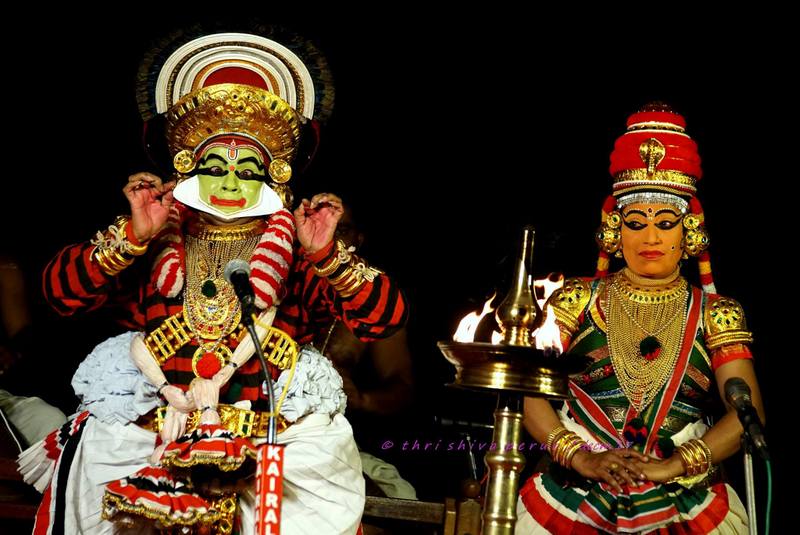
Actors train for ten to fifteen years to become fully-fledged performers with sophisticated breathing control and subtle muscle shifts of the face and body. The artistry of the actor is in elaborating on a situation or episode in all of its nuances. As a result, a single act can take days to complete, and a full performance can last up to 40 days.
There are three sections to a Koodiyattam performance.
- The ‘purapaddu’ is the first of them, in which an actor delivers a verse alongside the nritta part of dancing.
- The actor then performs the ‘nirvahanam’, in which he portrays the mood of the play’s main character using abhinaya.
- The koodiyattam, or play itself, is the concluding element of the performance.
While the first two acts are solo acts, Koodiyattam can have as many characters as necessary to perform on stage.
Musical Elements
The main musical instruments used in Koodiyattam are traditionally the mizhavu, kuzhitalam, edakka (an hour-glass shaped drum), kurumkuzhal (an oboe-like wind instrument), and sankhu (conch shell).
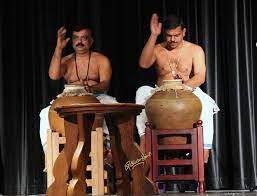
The Mizhavu is one of the most striking percussion instruments in temple music traditions. It is henceforth, a vital part of Kerala’s performing arts traditions in many ways.
The drums, which have significant symbolic value, set the tempo and mood, as well as heighten the drama. It is played only with hands. Earlier, the Mizhavu was made from clay, but now metals have taken the lead in the manufacture of this instrument.
This instrument is one of a kind in that it produces a bright tone that is rich in classical rhythm and clarity. Its deep and majestic tone makes it perfect for solo percussion symphony, despite its use as an accompaniment to Kerala’s performing temple arts.
Famous Koodiyattam Artists

Late Natyacharya Vidushakaratnam Padma Shri Guru Mani Madhava Chakyar is the most notable and recognized artist of Koodiyattam and was known for Rasa Abhinaya.
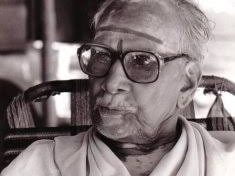
The other most important exponent of Koodiyattam is Padma Bhushan Ammannur Madhava Chakyar.
The highest award, the Sangeet Natak Akademi Award was given to Koodiyattam artists such as Kalamandalam Sivan Namboodiri in 2007, Painkulam Raman Chakyar in 2010, and Painkulam Damodara Chakyar in 2012.
Final Thoughts
Cultural heritage is something that all humans have in common; wherever we come from, there is a culture that follows us. Your culture will always be something you can take with you no matter where you grow up or go. It’s important to see your heritage as an inheritance that has great value. The knowledge of culture and the emotional connect it brings to the table is always rewarding.
Thus, Podium takes great pride in introducing you to this invaluable dance form and we hope we could encourage you to learn and understand about the same.
There’s nothing like knowing your kids are excited about what they’re studying and researching. Kids are more inspired to be innovative and put in a lot of effort when emotionally linked to their assignments. We, at Podium, aim to do exactly the same.
Take a look at our live Kathak classes on our website and join us on this voyage of synchronicity and delight!
Catch up with us on our blog for more updates and don’t forget to check out our newest update on the Classical Dance archive on Odissi and its various forms!
Share with your friends
